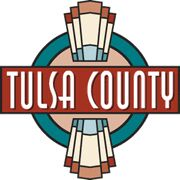User Spotlight/Case Study: Mississippi Department of Transportation
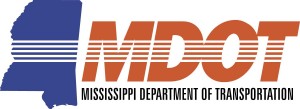 Mississippi D.O.T. The Mississippi Department of Transportation put out an RFP (Request For Proposal), CitiTech Systems responded… and was chosen! Although our other users know our software as “CMS”, MDOT calls it “AMMO”, which stands for Accountability in MDOT Maintenance Operations.
Mississippi D.O.T. The Mississippi Department of Transportation put out an RFP (Request For Proposal), CitiTech Systems responded… and was chosen! Although our other users know our software as “CMS”, MDOT calls it “AMMO”, which stands for Accountability in MDOT Maintenance Operations.
MDOT took the time to review their business processes, determine which modules were needed, and to set up the system to meet their unique requirements. They analyzed work flow and historical data. Sessions were lead by Jacobs Engineering and included MDOT senior staff and organization representatives, Dye Management Group, and CitiTech representatives. Processes were reviewed in terms of current (“As Is”) and future (“To Be”) maintenance processes. They looked at current Bridge and Pavement Management plans. They identified modules (existing or not) they would need in order to meet their goals. They commissioned special screens, used only by MDOT, such as a Data Collection Form for inspections. They reviewed work assignment processes. They discussed reporting requirements.
MDOT wanted to spend time and money on the right things at the right time for the right reasons – using required resources more efficiently. They felt that by using the right software, operations would be smoother and would allow MDOT to adopt “best maintenance practices” for managing the asset inventory.
Business improvement opportunities were identified by the Dye Management Group. Throughout the work flow analysis, opportunities for improvement were reviewed and discussed, incorporating as many of these expectations as possible with each “To Be” maintenance process. BPI opportunities were found for Planning, Budgeting, Scheduling, Program Execution, and Evaluation processes.
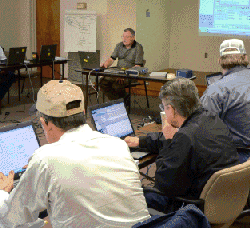 MDOT found that CMS would enable a more proactive best practice approach to the management of maintenance operations. They felt that the implementation of maintenance quality assurance, level of service analysis, an annual planning cycle and associated scheduling would improve the standardization of work and the ability to influence the budget distribution process.
MDOT found that CMS would enable a more proactive best practice approach to the management of maintenance operations. They felt that the implementation of maintenance quality assurance, level of service analysis, an annual planning cycle and associated scheduling would improve the standardization of work and the ability to influence the budget distribution process.
MDOT decided they would purchase the Basic System with many Multi-User Licenses, Work Planning, Work Order Management, Work Scheduling, Pavement Management, Roadway Features, Inspections, Contract Management, Remote Processing, and Bi-directional GIS. They purchased CMS Version 8 on January 15th, 2008. Once fully implemented, it will replace their existing system, called “MAS”, and also allow data to flow to other systems currently in use, such as FMS.
The first of our users to begin using CMS in Version 8, MDOT is also the only user using Oracle database platform instead of SQL Server.
The Work Planning module will provide a department-wide analysis and consolidation of information to identify needs and budget requirements based upon level of service targets.
Work Scheduling will result in improvements in productivity, resource/equipment utilization and sharing. This will provide improved resource allocation, better management of material usage, and better allocation and sharing of resources.
Inspections will give them standardization of the maintenance management cycle – providing consistency at a department–wide level and enhancing reporting and analysis of the maintenance functions.
Using CMS will allow separate islands of information to be consolidated into a single system for reporting. This reduces the complexity associated with trying to understand many different systems. It allows easier consolidation of information resulting in the ability to view the organization from different perspectives with the same accurate, timely data. In fact, CMS Reports will allow MDOT to conduct a more detailed analysis of work activities with less effort at a department-wide level, resulting in the ability to compare work activities at a crew, county, district and state level through standardized reporting.
Mississippi D.O.T. reviewed the software in detail for quality assurance purposes; acceptance testing has been completed, and “Go-Live” testing is being conducted in one district of the state.
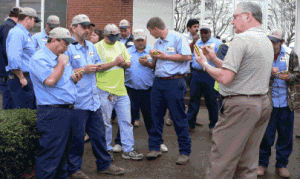 Since CMS Version 8 (“AMMO”) will be used statewide, it’s being rolled out in stages. To accomplish this, they began by developing pilot training and testing processes. They tasked a single district to be “pre-trained” and begin using the software – including groups of Managers, Supervisors, and Crew Leaders. The pilot training was done to ensure accuracy of information and consistency with their business processes, and to identify any changes needed for the formal training. District One began using the software immediately after being trained. This will allow department heads to evaluate effectiveness of the training, and ensure the data being entered meets their requirements, before rolling it out statewide.
Since CMS Version 8 (“AMMO”) will be used statewide, it’s being rolled out in stages. To accomplish this, they began by developing pilot training and testing processes. They tasked a single district to be “pre-trained” and begin using the software – including groups of Managers, Supervisors, and Crew Leaders. The pilot training was done to ensure accuracy of information and consistency with their business processes, and to identify any changes needed for the formal training. District One began using the software immediately after being trained. This will allow department heads to evaluate effectiveness of the training, and ensure the data being entered meets their requirements, before rolling it out statewide.
Different groups were trained on different aspects of the software. Managers and Supervisors were presented “big picture” overviews of CMS. Training for Managers included work planning and LOS (Level Of Service). Since MDOT will be capturing data in the field using laptops and handheld devices, training for Supervisors included creating work orders, scheduling personnel, work reporting, and downloading data onto handheld devices (and uploading records). Training for Crew Leaders focused on accessing their work orders and doing work (against work orders and ad hoc) on the handhelds.
Jennifer Kiihnl, from the I.T. Dept in District 2, took the time to create “Cheat Sheets” for the various processes being presented during the training. “The quick reference guides should be a very helpful tool for our users, especially when familiarizing themselves with the system”, she said. “Various quick reference guides will be developed as needs arise. Currently, quick reference guides exist for such tasks as creating a crew, creating a work order and completing a work report. I’ve also created them for handheld operations. These are step-by-step guides using screen shots and arrows to direct the user as they familiarize themselves with the software. These quick reference guides also point out fields that are especially important for MDOT data collection.”
MDOT chose a “Train The Trainers” approach; select computer-proficient personnel are being trained, who will in turn train each district throughout the state, ensuring consistency of methodology throughout the organization.
MDOT also regularly takes advantage of Webinars offered by CitiTech Systems presenting CMS’s capabilities – allowing them to see a quick overview of a feature or module, and evaluate functionality they may want to implement in the future, such as Templates.
Ken Hauser, from the Maintenance Division in Jackson, Mississippi, had this to say: “We have been waiting for a comprehensive Maintenance Management System for a long time. Now we have one and everyone is enthusiastic. We feel we have a good product with CitiTech.”
User Spotlight/Case Study: City of Indio, California
 Indio Water Authority, Indio, California When Indio Water Authority, in Indio, California, needed a General Services Manager, they hired Gary Lewis. With years of experience under his belt, he thought he knew what to expect – but he was in for a shock! “When I arrived in Indio, the system that they were using was complicated and rigid, and the staff refused to work with it!”
Indio Water Authority, Indio, California When Indio Water Authority, in Indio, California, needed a General Services Manager, they hired Gary Lewis. With years of experience under his belt, he thought he knew what to expect – but he was in for a shock! “When I arrived in Indio, the system that they were using was complicated and rigid, and the staff refused to work with it!”
Luckily, he knew what to do. Having previously spent 8 ½ years in same position in City of Arcadia, California, he drew upon his experience there. “When we were looking for software for City of Arcadia, we selected CitiTech Management software because it was the most flexible. We did not have to “reinvent the wheel” because CitiTech was adaptable to our work environment.” He recommended CMS, and City of Indio Water Authority purchased it, and got on-site training from CitiTech staff.
“With the introduction of CitiTech, staff found it much more user-friendly and adaptable to their work environment. Due to CitiTech’s modular design, as staff become more proficient, we were able to add to it. Our staff became adept utilizing the system.”
The City of Indio initially purchased the Basic System with multi-user licenses for Work Orders, Warehouse Requisitions, and the Vehicle Replacement Program. The following year, they bought Traffic Safety, Inspections, and Remote Processing, Pavement Management, Utility Management, and Work Scheduling. They recently added a module for Bi-directional GIS. “We did not have to buy all the modules at one time. We were able to pay for them as we entered data into each one, thus having less of an impact on the budget”, Gary said.
Toyasha Black, the Management Analyst for the City of Indio, oversees the City’s maintenance tracking program along with her other duties. She knows CMS, and is in fact the “go-to” person for questions regarding the software. She takes advantage of the free Webinars CitiTech offers to learn about the new modules as they purchase them. She states, “I really like the webinars! They allow for the flexibility to schedule a meeting quickly to go over one module or several. It provides really great customer service. And it doesn’t cost anything! I have used the webinars often when I use/purchase a new module.”
Dennis Wolbert, the Fleet Mechanic Supervisor, oversees day-to-day Shop and Fleet operations, and works with CMS’ Fleet Maintenance module. He was quoted as saying, “I am learning more about CMS every day. Coming from a fleet background, I only work in one small aspect of CMS. But in looking at all of the other aspects of CMS, its capabilities seem to be endless.” What about technical support? He states, “I have had to the opportunity to interact with quite a few of the staff at CitiTech and everyone has been very delightful to deal with. Whoever I speak to, if they do not have an answer, they will find it and call back or email me right away. I look forward to learning more about CMS and utilizing it more in my assignment with the City of Indio.”
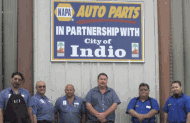 John Ramos, a NAPA employee who works with Dennis and provides parts inventory, makes the connection between CMS and the NAPA invoice by entering the invoice number in the resource notes of the Warehouse Requisition form. When he needed notes to show up on the reports he ran daily, he called the support staff at CitiTech, and they added them. He can even query by the invoice number in the reports screen!
John Ramos, a NAPA employee who works with Dennis and provides parts inventory, makes the connection between CMS and the NAPA invoice by entering the invoice number in the resource notes of the Warehouse Requisition form. When he needed notes to show up on the reports he ran daily, he called the support staff at CitiTech, and they added them. He can even query by the invoice number in the reports screen!
No one knows what the future will bring, but one thing is certain; Indio will continue to use CMS to meet their unique needs. According to Gary, “The reason we have stayed with CitiTech is that the staff is helpful, innovative, and creative in helping us adapt their system to our needs.” Toyasha adds, “I enjoy working with CitiTech software, mostly because if I or the staff thinks that it should work differently, CitiTech will work with us to change a module to better meet our needs. Other software systems are not as flexible and you have to work with what you’ve got. By the staff having the flexibility to make changes and the support of the General Services Manager and CitiTech to make those changes, staff is more supportive of the system. It’s great to have a maintenance tracking software system that everyone is excited to use!”
User Spotlight/Case Study: City of Arcadia, California
 City of Arcadia, CA Arcadia Public Works became a customer in July of 1999. Gary Lewis, General Manager at that time, bought the basic system and some modules and budgeted for more, adding additional ones as they expanded on the basic system. Today they are the proud owners of most of the modules available in CMS – some of which they inspired! In fact, they’ve been instrumental in so much of CMS, including the reports, that we had to categorize their influence! We’ll show you Arcadia’s impact in terms of Functionality Enhancements, New Modules, and CMS’s viewpoint.
City of Arcadia, CA Arcadia Public Works became a customer in July of 1999. Gary Lewis, General Manager at that time, bought the basic system and some modules and budgeted for more, adding additional ones as they expanded on the basic system. Today they are the proud owners of most of the modules available in CMS – some of which they inspired! In fact, they’ve been instrumental in so much of CMS, including the reports, that we had to categorize their influence! We’ll show you Arcadia’s impact in terms of Functionality Enhancements, New Modules, and CMS’s viewpoint.
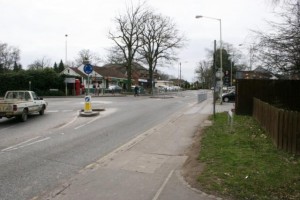 Currently they own the Basic system, 3 multi-user licenses, Work Orders, Work Scheduling, Warehouse Requisitions, Traffic Safety Management, Pavement Management, Utility Management, Contract Management, the Vehicle Replacement Program, Fuel Master, and Bi-directional GIS!
Currently they own the Basic system, 3 multi-user licenses, Work Orders, Work Scheduling, Warehouse Requisitions, Traffic Safety Management, Pavement Management, Utility Management, Contract Management, the Vehicle Replacement Program, Fuel Master, and Bi-directional GIS!
Arcadia took advantage of CitiTech services like custom report writing and data import services. For example, the Lighting Report was commissioned by, and written specifically for, Arcadia. As another example, they had CitiTech convert and import existing equipment, inventory, sidewalk, curb/gutter, and sign data tables, negating the need for data entry for most resources and assets.
Work Orders was initially used by one department, but has since been expanded city-wide, using departmentalization.
Anne Woo has been an Administrative Assistant with Arcadia for the past 8 years. She uses Work Orders to meet customer service needs, both to the public and internal departments. Most of her Work Orders relate to maintenance of the city’s sewer and storm water assets, concrete and asphalt streets, solid and industrial waste, city trees, water services, public buildings, traffic control, and the city’s vehicle fleet.
CMS helps her her do her job by capturing all the details – not just what the problem is. For example, when she enters the problem, the activity required to fix the problem is available. She is able to enter the problem’s location, caller information (name, phone number, address, etc.), and more! The location field is tied to Service Meters – so they come in automatically! She can prioritize Work Requests, refer them to people or departments, and even email them! Of course, statistics are available for all her Work Requests – she can tell at a glance how many are in each status, and how many are overdue. She can even print a report that shows how long it took to complete each of them! Anne likes the incremental search function – she can begin typing a problem/need and it can find the existing one!
“CMS helps me answer questions and justify maintenance operations by printing reports such as the Response Time Summary report (to show how long it took to complete Work Orders) and the End of Year reports (to help justify maintenance operations and budgets).” When asked what she thinks of CMS, Anne said, “For my uses – work orders, tracking water meters, basic inventory counts, payroll, and tracking employees – it’s been GREAT! Very user-friendly.”
Maria Taylor, Senior Management Analyst for the Public Works Services Department for 6 ½ years, runs reports in CMS to help her retrieve data she needs to help her accomplish her duties, which include budgeting and managing special projects like the Solid Waste and Recycling Program. She had this to say about the technical support CitiTech Systems provides: “The staff is very responsive, and the followup is excellent. I am highly impressed with [the technician]’s diligence, tenacity and high quality customer service trying to find a resolution to a certain issue during our recent Warehouse Inventory.”
Functionality Enhancements Enjoyed By All, Due to Requests From (and in some cases, Commissioned By) City Of Arcadia
Blanket Purchase Orders add another facet to the Purchase Order module; by designating a PO as a “Blanket PO”, it can remain open for a year, be tied to one specific inventory item (or not), contain a target amount, and encumber funds.
Overdue Purchase Orders are included in Alert Reminders.
Inventory Valuation Reports exist.
Two “Additional Info” tabs in the Equipment Master module were added as a result of the multitude of User-defined fields created by Arcadia to track needed information such as engine, transmission, fuel, and warranty data.
The “Show Where” dropdown for equipment was created as a result of Arcadia’s request.
Addressing exists in its present form because Arcadia needed standardization of addresses.
New Module Development
Warehouse Requisitions came about because City of Arcadia needed tighter inventory control.
Service Accounts was created because City of Arcadia needed to track Meter Readings and Meter Replacement activities but CMS didn’t. It started out as two special screens being launched if certain activities were input into the Work Order, and has evolved to become its own module, but is still tied to Work Orders. In addition, a special module is available for Arcadia only – the Bulk Meter Rotates form.
Vehicle Replacement Program was created for City of Arcadia in order to help them forecast equipment replacement needs city-wide, by department.
Inventory Receipts was added to simplify receipt of inventory based on Arcadia’s request.
Arcadia’s Influence on CitiTech’s Point of View
CMS’s Inventory. Examples of Arcadia’s fingerprints include a default tax rate which is added to the total cost of a Purchase Order, choices in methodology for costing out inventory, and inventory requisition/order/fill/issue/return/backorder.
CMS’s GIS approach. Functionality is loosely based on how Arcadia’s GIS program ties GIS data to CMS’s data.
Conclusion
Our users are a valuable part of our Research & Development team, and CitiTech will continue to listen, learn, and implement your ideas; whether they will benefit only your organization or the entire customer base, they help make our software better!
User Spotlight/Case Study: Alabama Department of Transportation
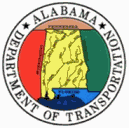 CitiTech would like to welcome its latest user, the Alabama Department of Transportation (ALDOT), to the growing CMS family.
CitiTech would like to welcome its latest user, the Alabama Department of Transportation (ALDOT), to the growing CMS family.
As many of you know, CMS has evolved in the last several years as a result of its first DOT implementation with the Mississippi Department of Transportation (MDOT).
“Fortunately, modifying CMS from a city/county maintenance management system to have a state DOT focus wasn’t overly difficult,” said Brian McKiernan, CitiTech president. “All CMS users have the same objectives… maintain assets and extend asset life, control costs and provide the best customer service possible. DOTs are more focused on work planning and budgeting, but they all have the same basic maintenance management mission.”
When ALDOT independently selected CMS for its state-wide maintenance management application in 2010, CMS already met basic DOT requirements, yet was flexible and configurable enough to accommodate ALDOT-specific functionality, as well.
“The MDOT and ALDOT implementations have benefited all CMS users; between them, handhelds, improved asset location screens using GPS, GIS, and Linear Referencing System (LRS), improved inspections with Level of Service indicators, and better cost reporting have all been integrated into the CMS model.”
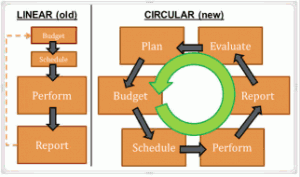 ALDOT had a goal to improve their maintenance management processes. With the assistance of Dye Management Group, ALDOT initiated an extensive maintenance management improvement program consisting of several related efforts. One effort involved holding workshops to understand current business practices and identify strengths and weaknesses of the current program. Combining this information with Guidelines for Maintenance Management from the American Association of State Highway Transportation Officials (AASHTO), and taking into consideration the experiences of other state departments of transportation, ALDOT was able to apply that information to the proposed future maintenance management business model.
ALDOT had a goal to improve their maintenance management processes. With the assistance of Dye Management Group, ALDOT initiated an extensive maintenance management improvement program consisting of several related efforts. One effort involved holding workshops to understand current business practices and identify strengths and weaknesses of the current program. Combining this information with Guidelines for Maintenance Management from the American Association of State Highway Transportation Officials (AASHTO), and taking into consideration the experiences of other state departments of transportation, ALDOT was able to apply that information to the proposed future maintenance management business model.
This performance-oriented maintenance management model wasn’t new – it’s maintenance management lifecycle best practice! It is based on an iterative flow, incorporating a feedback loop throughout the entire process. It begins with initial planning, which then flows to budgeting, scheduling, performing, reporting, and concludes with an evaluation of outcomes. Feedback on these outcomes are then incorporated back into the planning process where the cycle begins again. See Figure 1.
ALDOT named this model “RoadMAP” which stands for Road Maintenance Accountability Program. In order to implement RoadMAP, ALDOT needed an off-the-shelf solution that could be put into operation quickly and configured to meet their specific requirements. ALDOT found what they needed with CitiTech Management Software, which complemented their proposed maintenance management business model. In fact, CitiTech Management Software met 91% of ALDOT’s requirements right out of the box! The contract was awarded to CitiTech Systems, Inc. and Exor (which was in the process of being acquired by Bentley Systems, Inc.). Bentley Systems managed the implementation of the software and developed several interfaces, such as a Random Condition Assessment Sample Generator, which continues to save ALDOT much time and effort in preparing for its annual condition assessments. Dye Management Group provided project support, including monitoring and reviewing the implementation, training, user acceptance testing, and roll-out to ensure ALDOT’s goals were being met.
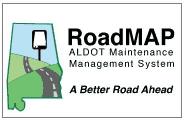 ALDOT also had some enterprise systems that they wanted to keep as the primary system of record. To fulfill this need, CitiTech Systems developed interfaces. For example, interfaces were built to use the data in the Alabama Bridge Information Management Systems (ABIMS) to create and update bridge inventory and condition assessments. The custom interfaces were also built to use inspection data from ALDOT’s Pavement Management Office to generate pavement condition assessments in RoadMAP. The results collected from the bridge and pavement condition assessments are then used for calculating the Level of Service (LOS) for assets.
ALDOT also had some enterprise systems that they wanted to keep as the primary system of record. To fulfill this need, CitiTech Systems developed interfaces. For example, interfaces were built to use the data in the Alabama Bridge Information Management Systems (ABIMS) to create and update bridge inventory and condition assessments. The custom interfaces were also built to use inspection data from ALDOT’s Pavement Management Office to generate pavement condition assessments in RoadMAP. The results collected from the bridge and pavement condition assessments are then used for calculating the Level of Service (LOS) for assets.
Other interfaces were developed to create and/or update records in RoadMAP for Employees using their Human Capital Management (HCM) system and Comprehensive Project Management System (CPMS). Equipment records are also updated using CPMS and their Comprehensive Equipment Management System (CEMS) and Material records are updated using CPMS. In addition, CitiTech created triggers that send emails to the appropriate ALDOT personnel regarding accident-related work orders being scheduled or completed, and regarding completed sign-related work orders. RoadMAP evaluates the results of sign inspections and, if any sign falls out of the user-defined standards and work has not been done to repair the deficiency, sends an email to the appropriate personnel! CitiTech also developed an interface that allowed customer input data on LOS for each maintenance feature, including customer ratings, to be brought into RoadMAP. Another interface developed by CitiTech Systems creates equipment usage data when the minimum required hours/miles have not been met for a month – by either creating or updating work reports. Of course, some of these interfaces needed custom reports, so CitiTech provided reports such as “LOS Actual –vs- Customer Perceived,” “Outbound Labor,” “Outbound Equipment,” “Outbound Material,” and “Accident Reimbursement.”
In addition, ALDOT needed a customized condition assessment form, so CitiTech Systems designed a “Data Collection Form” to their specifications. After all, the Alabama State Highway System consists of approximately 11,000 centerline miles of roadway, so the ability to continue assessments in a familiar way was important. ALDOT identified specific functionality that was lacking in the calculation of inventory quantity and CitiTech enhanced core CMS software to improve it for everyone! A new system preference was created for calculating “Inventory Qty” by factoring in Asset Program (or not), which affects Annual Work Plans, LOS Analysis, Work Plan Analysis, and Budget Analysis.
ALDOT is geographically organized into nine (9) Divisions that cover the entire state. Each of these divisions is further divided into Districts, totaling forty-one (41) throughout the state. The organizational structure is such that the Districts collectively report up to the Division in which they are located. Similarly, Divisions, from a maintenance management perspective, roll-up to the ALDOT Maintenance Bureau, with its central office being located in Montgomery. That’s a lot of personnel to train! Following the typical approach for state level implementation, they decided to “Train the Trainers” who would train others.
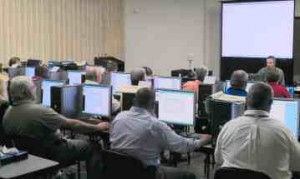 CitiTech Systems developed the training program and conducted training for the trainers. Brian McBrayer, the ALDOT RoadMAP Program Manager who had been involved in every aspect of implementation, was also on hand to help instruct and provide information on ALDOT-specific processes. Bentley Systems and Dye Management personnel were on hand, as well, lending expertise. ALDOT identified personnel in each Division who would be the “power users” for their group. Some students were seeing RoadMAP for the first time.
CitiTech Systems developed the training program and conducted training for the trainers. Brian McBrayer, the ALDOT RoadMAP Program Manager who had been involved in every aspect of implementation, was also on hand to help instruct and provide information on ALDOT-specific processes. Bentley Systems and Dye Management personnel were on hand, as well, lending expertise. ALDOT identified personnel in each Division who would be the “power users” for their group. Some students were seeing RoadMAP for the first time.
Representatives from CitiTech, Bentley, and Dye Management were also present for User Acceptance Testing, which occurred the week following the training session and used the newly-trained trainers to help test functionality to ensure it met all requirements before the roll-out to the Divisions and Districts began.
ALDOT began with a goal of improving their maintenance management processes. Did they accomplish that goal?
End results of RoadMAP implementation statewide include the ability to link asset LOS to cost, without having to change existing processes. They can now create an annual work plan based on target LOS, and adjust it using LOS Analysis and Budget Analysis. They can also perform “what-if” analyses based on budget constraints, personnel changes, material cost trends, and equipment purchases. They are now able to justify current and planned (future) expenditures. Using RoadMAP, the desired LOS is defined; the annual maintenance programs are designed to provide that LOS, and the resulting conditions of maintenance assets are assessed to determine if the desired outcomes were achieved. This assessment of desired versus actual outcome is then used as the basis for refining the maintenance program for the following year.
Over time ALDOT will be able to refine their Work Plans based on actual accomplishments, spot cost trends, and apply best practices across the board, resulting in “A Better Road Ahead.”
Let’s welcome ALDOT to the CMS family.
User Spotlight/Case Study: Tulsa County Highway Department
Back in the old days (a really long time ago), our users were expected to daypost, monthpost, yearpost! Hard to believe, since we’re spoiled now with up-to-the-minute information available in CMS. What if I told you one user still dayposts?
Tulsa County Highway Department bought CMS, Version 6, on July 23rd, 1999, had on-site training on V6 in October 2000… and have been using the heck out of it ever since! (Yes, you read this right… they never converted to Version 7.)
Users might ask, “Don’t they know how great CitiTech’s upgrades are? Why did they wait so long to convert?”
According to Barbara Pursell, Database Administrator for the Tulsa County Engineering Department, which oversees the Highway Department, when a county-wide accounting system was mandated and implemented, they contemplated abandoning CMS altogether in favor of using the other one exclusively!
Wait. An accounting system doing what CMS does?
“When we got the new system, we discovered that we would be doing a lot more work and getting a lot less information out of it. Also, it wasn’t as flexible as CitiTech software… AND they were not as responsive.”
Wait. A lot more work… for a lot less information?
What kind of information does Tulsa County need that the accounting system can’t provide?
“With CitiTech we are able to track all our project costs, and get detailed reports on employees, equipment, inventory, and contractors used”, said Tom Rains, County Engineer.
“We get employee attendance. We get fuel consumption quantities and costs per vehicle, which originate from our GASBOY program. We can get information on anything from how much gas was used in a month to how many days off an employee had to how many hours a piece of equipment was run in any given week or month or year, and how much it cost to maintain that piece of equipment.”
Instead of abandoning CMS, they leveraged CitiTech’s flexibility to customize data to match codes in the new system. They leveraged CitiTech’s know-how to compare data in the two systems. They leveraged CitiTech’s manpower to write approximately 60 custom reports they use on a weekly basis.
Tulsa County’s foresight and CMS’s configurability have allowed them to meet accounting requirements and perform little or no dual entry while keeping CMS and the information they need. For example, mandated State of Oklahoma reports like the Consumable Reports (reports that show material items they use whose value exceeds $500.00 in a year). “Without CitiTech we would be using Excel or Access if not pen and paper for our Consumable reports”, said Pursell. “Custom reports developed in CMS automated the process, automatically increasing efficiency.”
 Tom Rains added another example. “We have had 3 FEMA events in the last 5 years and have been audited on one, and not only did we pass but were complimented on our records!”
Tom Rains added another example. “We have had 3 FEMA events in the last 5 years and have been audited on one, and not only did we pass but were complimented on our records!”
Now for the best part. They’re poised to convert directly to Version 8! What does this mean for them?
The Tulsa County Highway department uses CMS to manage their Work Orders, Roads, Bridges, and more. It captures their fuel costs per vehicle, per department automatically. It manages their Projects, their labor, equipment, and material resources, their contracts, and more – much more.
What it means for them is a technological upgrade to what they already do – you know, Smart Client functionality, improved reporting and reporting capabilities, better interfaces… and no more dayposting (or monthposting)! Yearpost is still performed to close out the year, but data isn’t archived anymore, so it remains accessible forever.
For the Engineering Department, it means even better information, and better reports, even faster.
What’s next For Tulsa County?
“Final data conversion and Training!” Tulsa County is able to customize the training schedule to meet THEIR needs, so they can get maximum value for their training dollars.
Please join us in welcoming our newest (to Version 8) user (and the last one on Version 6), Tulsa County Highway Department, and bidding a (not so) fond farewell to dayposting!
